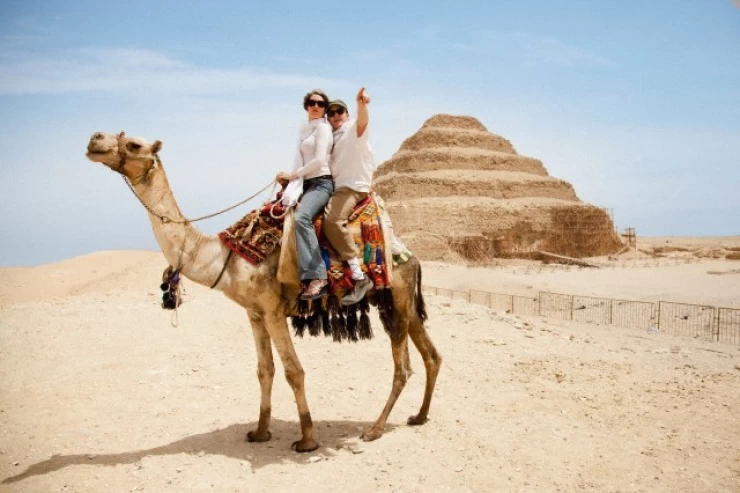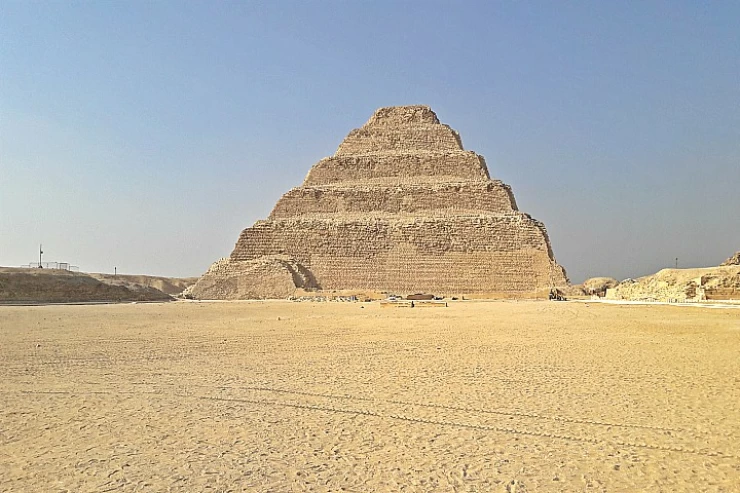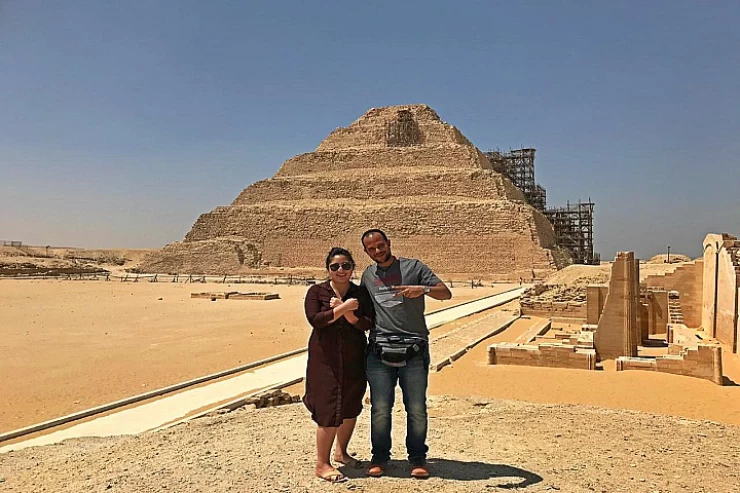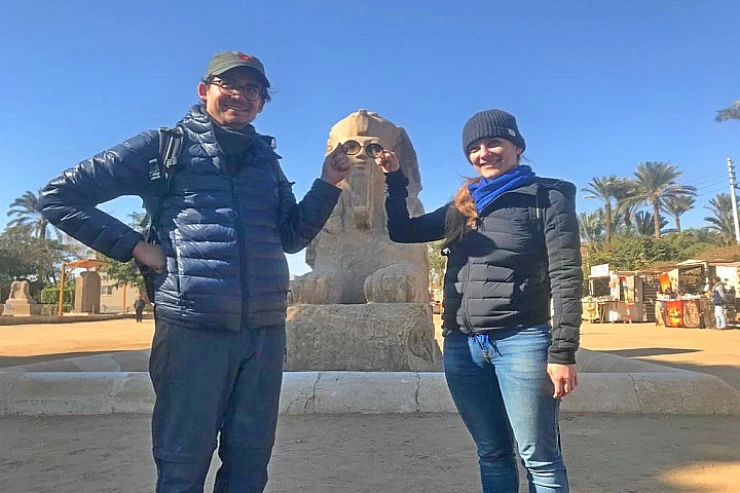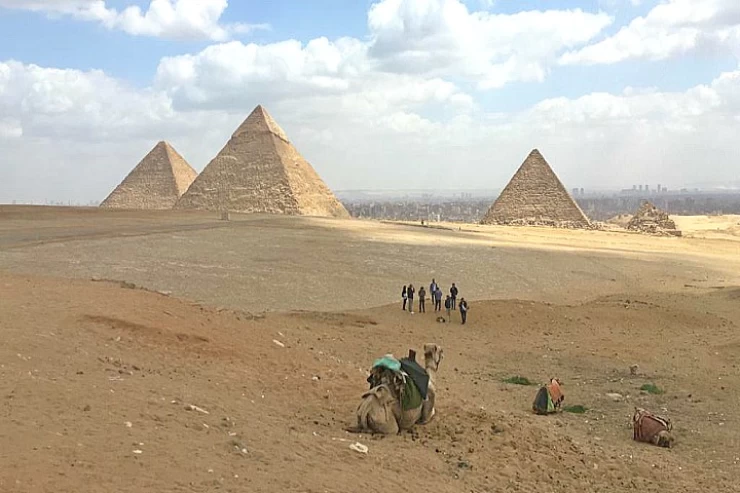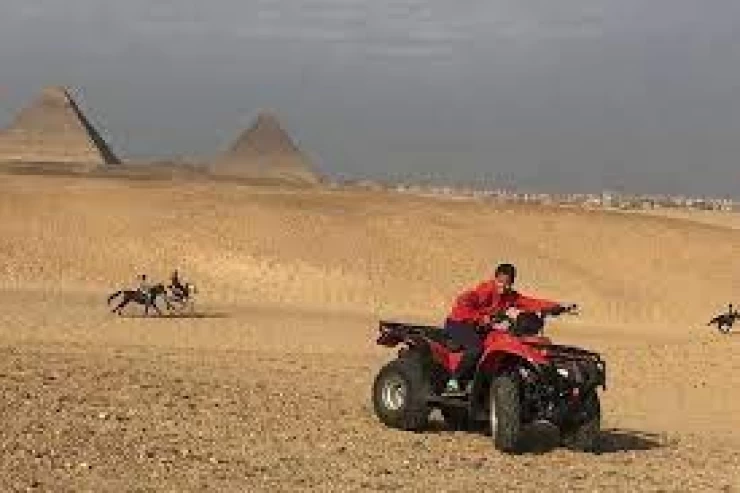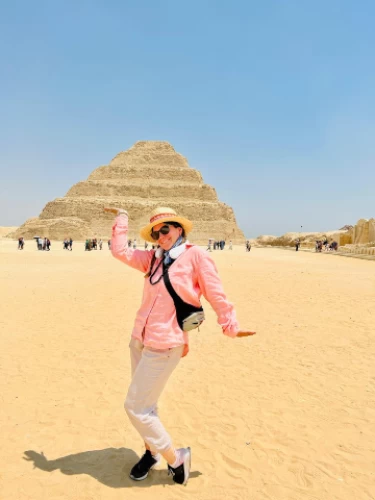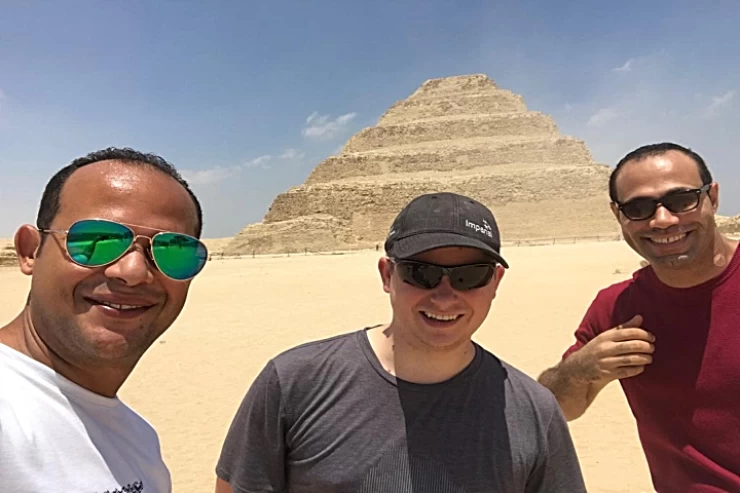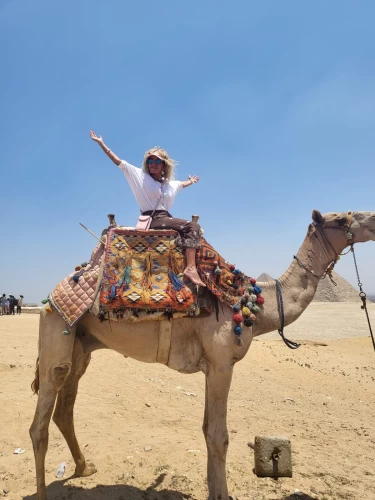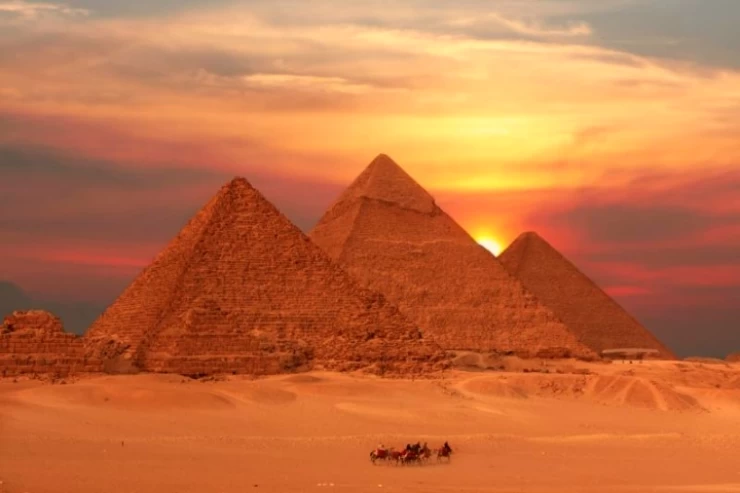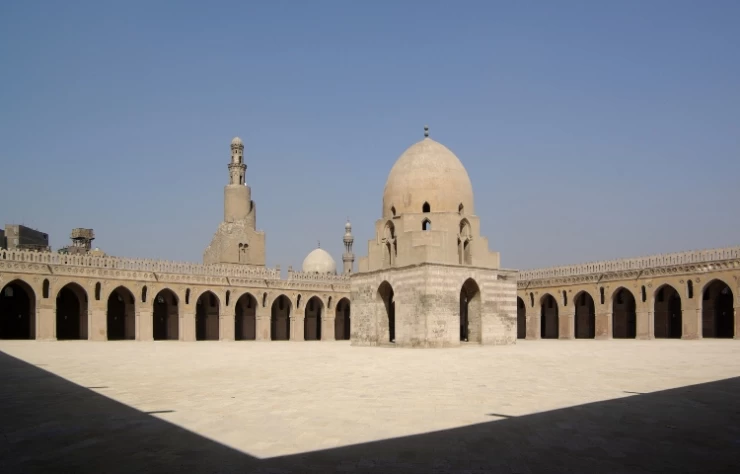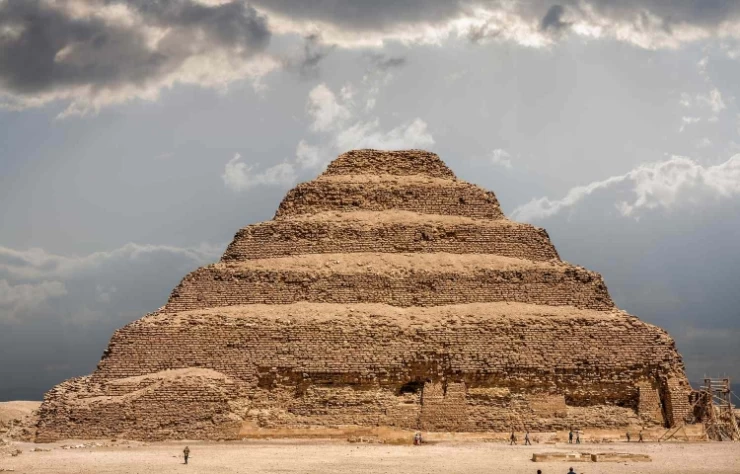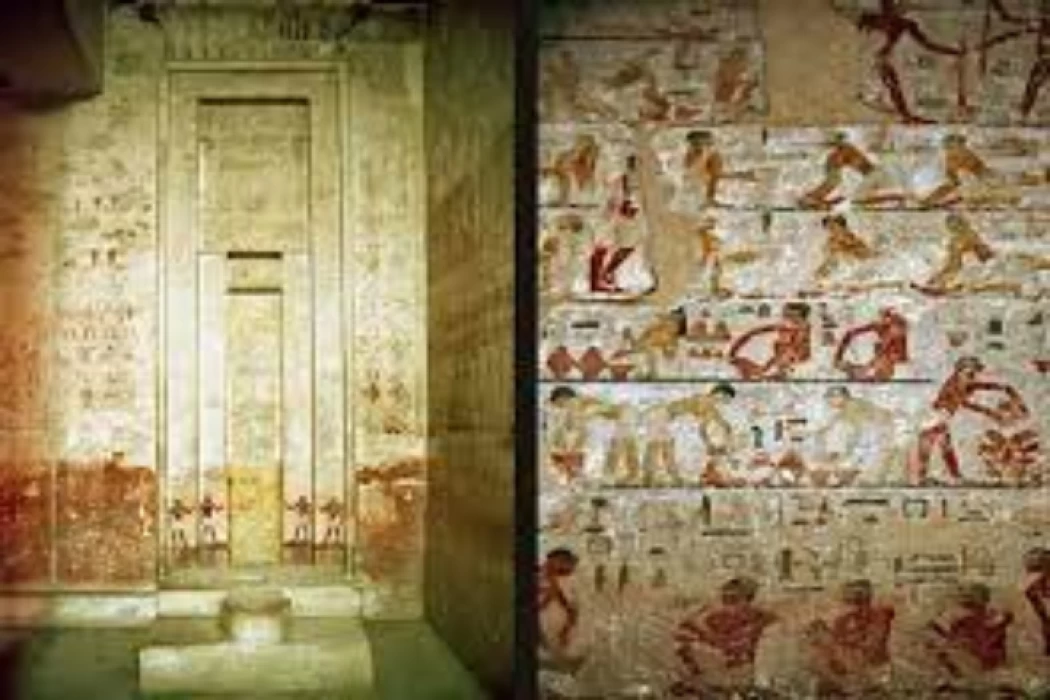
Ti Tomb Saqqara
Ti Tomb Saqqara | Ti Tomb in Egypt
Tomb of Ti, an employee of the Fifth Egyptian Dynasty, in the twenty-fourth century BC. The cemetery is located in the northern part of the central Saqqara region, about 500 meters or 1640 feet northwest of the pyramid of Zoser. In Giza Governor-ate, Cairo, Egypt.

King Djoser | King Zoser
The position
Ti was a great servant in the era of the last king of the Fifth Egyptian Dynasty. And he held the post of supervisor of the pyramids of Neferir Ka Ra, Nei User Ra, and the sun temples of Sahure, Nefer Aire Ka Ra, Nefar AFR, and Ne User Ra. The tomb of Tiye, located in Saqqara, has become one of the most famous archaeological sites in Egypt, due to its inscriptions and inscriptions depicting detailed scenes of daily life and funerary scenes
Discovered
In 1865, Auguste Mariet discovered the tomb of Ti, and the entrance to the tomb leads to a large courtyard with twelve square columns. An empty Ti coffin was found in the burial well in the middle of the outer courtyard. The inscriptions remaining in the courtyard depict the owner of the tomb Ti in scenes of agriculture and other scenes of daily life, and in the southern wall, there are three openings through which the statue of Ti, in the hidden room or basement, can be seen through which the soul and spouse of the deceased can follow the funeral rites that were taking place in the tomb where he was Ti can contact the living world. There is a copy of this statue in the basement now, but the original is in the Egyptian Museum.
Tomb Description
A doorway flanked by figures of the dead man and inscriptions leads into a large pillared hall, with a modern timber roof borne on 12 square ancient pillars in which offerings were presented. In the center is a flight of steps leading into a low, sloping passage, which runs the whole length of the building to an antechamber and beyond this, the tomb chamber. The sarcophagus, now empty, completely fills the recess in which it stands.
A door at the far corner of the pillared hall leads into a corridor with reliefs of servants bearing gifts of all kinds into the tomb. Another door opens into a second corridor with paintings of sacrificial animals being slaughtered, and on the right-hand wall, the arrival of the ships in which Ti has inspected his estates in the Delta (note the curious steering gear). Above the entrance door, you can see Ti and his wife in a boat in a thicket of papyrus, while over the door into the chapel, female dancers and singers are depicted. A door on the right leads into a side room, in which the colors of the reliefs are excellently preserved.
In the chapel are two well-preserved and several damaged shipbuilding scenes: shaping the tree trunks; sawing them into planks; construction of the ship, with workmen using adzes, mallets, and crowbars and others fitting the planks together; and Ti standing in one of the ships, inspecting the work. The simple tools used by the workmen (a saw, axe, adze, and drill) are of great interest. While on the south side of the chapel are numerous paintings depicting everyday scenes, including men blowing through long tubes into a furnace in which gold is smelted, sculptors and makers of stone vessels, and a market scene (one man has two jars of oil for sale, another a wallet for which he is being offered a pair of sandals in exchange
You can learn fascinating facts about El Suez Governorate | Suez Canal Egypt. Some adventurous people visited Egypt and discovered all sorts of interesting information about it.
Latest Articles
Admin
Seabourn Sojourn Cruise Stops in Safaga Port
The Seabourn Sojourn, the flagship vessel of Seabourn Cruise Line's ultra-luxury fleet, was built in 2008 at the T. Mariotti shipyard in Genoa, Italy. Measuring 198 metres, it can accommodate up to 450 guests in its 225 spacious all-suite staterooms.
Admin
Norwegian Sky Cruise Stops in Safaga Port
Norwegian Cruise Line operates a cruise ship called the Norwegian Sky. It was constructed in 1999 and can accommodate 2,004 passengers in addition to 878 crew members. The ship has several dining establishments, lounges and bars, a spa and fitness center, swimming pools, and a number of entertainment areas.
Admin
Explora II Cruise Stops in Safaga Port
Explora II, the second vessel in the Explora Journeys fleet, sets sail in 2024 to redefine luxury cruising. With 461 ocean-front suites, 9 culinary experiences, and 4 pools, this haven of sophistication and sustainability promises an unforgettable "Ocean State of Mind" journey to inspiring destinations.
Admin
Mein Schiff 6 Cruise Stops in Safaga Port
The Mein Schiff 6 is the latest cruise ship in the renowned TUI Cruises fleet, offering passengers a luxurious and sophisticated cruise experience. At 315 metres long, this floating resort features a range of dining options, entertainment, and recreational facilities, including a spa, fitness centre, and sports amenities.
Admin
Mein Schiff 4 Cruise Stops in Safaga Port
When the Mein Schiff 4 cruise ship docks in Safaga, Egypt, passengers are granted access to a realm of ancient wonders. Aboard this state-of-the-art vessel, guests can embark on meticulously curated shore excursions that showcase the region's most iconic landmarks, including the Giza Pyramids, the enigmatic Sphinx, and the remarkable tombs and temples of the Valley of the Kings in Luxor.
Admin
MS Europa Cruise Stops in Safaga Port
The Silver Moon, Silversea's latest flagship, is a luxury cruise ship that offers an exceptional travel experience for Venezuelans exploring Egypt. With a capacity of 596 guests and an impressive 40,700 gross tonnes, the Silver Moon maintains the small-ship intimacy and spacious all-suite accommodations that are the hallmarks of the Silversea brand.






